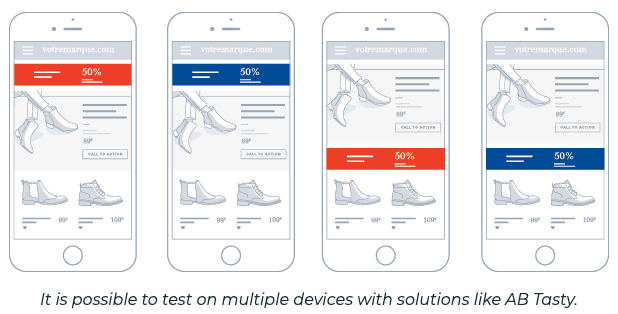It’s not uncommon knowledge that when economic struggle hits, creative design is often the first on the chopping block. This article shares Ignite Visibility’s recipe for future-proofing your creative marketing deliverables.
Creative services can take many behavioral shapes. At the most basic level, marketing teams will refresh their creative design out of a hygienic demand for new content. It is true search algorithms and social platform feeds literally “feed” on fresh content. However, there are levels to this. Beyond the basic refresh, here is our list of five strategies to help bolster your marketing design for long-term success:
1. Buy Low, Sell High
Economic downturn isn’t fun. The market circumstances arouse fear – an emotion that’s rarely associated with quality decision-making. Fear-based decisions often lead to worse results.
An inverse attitude comes from a well-known quote by Warren Buffet, “When others get fearful, get greedy. When others are greedy get fearful.” This can apply to capitalizing on market conditions through creative services.
One of the reasons for optimism for creative marketing design during a recession is due to their improved external validity. When all things are in the green, data is muddier. When pocketbooks get tight, only the strongest creative design campaigns will survive the test.
It could be argued that such stats are dynamic to market conditions and that creative brand marketing works in times of good, but may not work in times of bad. However, building a house of bricks relies on knowing how to behave with storm-proof creative design for tough times. These are the future-proof lessons that companies should be excited about developing if they have not.
From a strategic point of view, an economic downturn is an opportunity to push harder on marketing. Why? When competitors’ fear drives them to reduce their spend, there is less competition in the space. Cost-per-click is reduced and the overall effectiveness of each dollar is increased. While fear-mongering media may call it a dip, others see situations like this as a discount.
2. Bringing Offline, Online
One of the most difficult attribution questions to ask is: what is my ROI on brand awareness? Offline publications (radio, print, TV) sell media buyers on the number of eyeballs or ears that might come in contact with their ad spaces. This is hardly a reliable stat and a metric that is correlative at best (seeing how on/off impacts the bottom line or site traffic).
While it is easier to set and forget new creative designs, Ignite believes that providing creative service insights helps clients win in the short and long term. To be totally transparent, these learnings also help the Creative Services department strengthen our partnerships. Creative design and brand marketing go beyond a pretty picture as these learnings are included as essential ingredients to the revenue recipe.
Here are a few ways of tracking the effectiveness of your offline efforts:
- Use QR codes
- If Covid did anything to help marketers, it is the mass adoption of QR codes
- Driving users to landing pages with QR codes is an easy way to more accurately determine the effectiveness of offline campaigns
- Use Discount codes
- When times are tough, people love discounts
- Discount codes are another great way of measuring campaign effectiveness
Supplementing offline efforts with digital tracking is a great way to monitor campaign effectiveness. When ad spend is under scrutiny, these techniques help inform when to hold vs. when to fold.
3. Attenuate to the Zeitgeist
When times are hard, people have heightened scrutiny over how they are spending their money. This poses an opportunity to speak to the customer from a place of empathy to embolden loyalty.
This is not to be confused with corporate bandwagoning. E.g. Covid messaging around, “we’re all in this together” or whatever soup du jour media platitude has been arrived at. These efforts are not bad because they are wrong, just that they are banal symbols that do not have anything to do with the relationship with the customer. They are a missed opportunity.
A stronger example is to show rather than tell a customer that you care.
This show-don’t-tell technique displays a higher level of compassion. Of recognizing needs/wants and providing material value. Finding ways of being available and accessible to customers when it seems the rest of their world is becoming more difficult.
Another example that suits the 2022 market zeitgeist relates to the revolution in consumer investors. It is more common than ever for consumers to be open to support companies as investors rather than strictly as consumers.
- Rather than strictly “purchasing” a product, customers are thinking about purchases as investments more than ever
- Users are thinking about participating in such communities as a part of their personal identity
- Loyalty programs and community engagement aimed to surprise and delight customers support short and long-term growth
4. Test Test, One, Two, One, Two
Some of the most unique learnings come through times of financial hardship. For example, in the home and garden industry, they have learned that in times of good and bad, one variety of plant will sell the same. While it would be easy to assume that something edible would be in greater demand in times of struggle, as it turns out, flowers are the constant.
“FTD reports its sales numbers dipped by only about 5% from 2007 to the beginning of the recession in 2008 and didn’t see any significant further drops throughout the recession period, attributable to the fact that people weren’t necessarily buying fewer flowers, but were buying cheaper ones (and the dozen red roses for Valentine’s Day is a persistent enough cultural trope to survive any economic downturn).”
Whether in times of good or bad, people in this space are investing in beauty rather than utility. That is because of cultural habits people do not want to change (even if it means buying slightly less expensive flowers). With each space, there are likely counterintuitive learnings to be discovered. When times get tough, the logical pivot is to those products or services as the lead offering.
The broader point to be made is that when production and marketing are not behind due to demand, it is an excellent opportunity to improve processes and experiment with new testing models.
5. Focus On Solutions, Not Just Problems
If someone is dangerously sick, it doesn’t help them to know the inner workings of a disease. However, a competent doctor sharing information concerning the cure is much more welcome information.
Similarly, decision-makers do not enjoy reveling in problems. Performance just wants wins. A legitimate path of least resistance to those wins helps reduce anxiety and builds trust.
In addition, customers lean towards brands that present clear-cut solutions. Enter product design rendering – it’s like offering a crystal ball glimpse into future benefits, not just features of your offerings. It’s visually engaging and clarifies value, ensuring your audience sees you as the go-to solution provider.
Whether through partnerships, community outreach, rebranding, or new products, there are always opportunities to connect and strengthen a brand’s creative voice. Novel solutions to new problems will be a more attractive value proposition.
Hopefully, this article will have achieved this final point, to support your business in seeing opportunities for stabilization and learning, no matter the economic conditions. Blind optimism will not guarantee these wins. Curiosity, hard work, and strong creative minds are essential. However, blind pessimism will guarantee such wins never happen.
Pulling it Together
To review, here are the five points to future-proof your creative design:
1. Buy Low, Sell High: Consider doubling down in visibility during a less competitive ad market
2. Bring Offline Online: Track offline media efforts to understand campaign effectiveness
3. Listen to the Times: Learn and speak to your customer base’s unique needs at that moment
4. Test and Learn: Practice testing, avoiding assumptions and exploring more rigorous analysis
5. Provide Solutions: Customers want quick wins, develop loyalty by providing solutions




